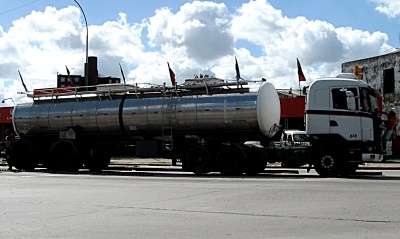The Importance of Oxygenates in Gasoline: A Look at the History and Regulation - Part 2
The use of oxygenates in gasoline has been a contentious issue for decades. One oxygenate commonly used in the United States gasoline was methyl...
2 min read
Erik Bjornstad : May 31 2023

Gasoline is a crucial part of modern life - the fuel that powers our cars and trucks. However, burning gasoline releases harmful pollutants into the air, including carbon monoxide, volatile organic compounds (VOCs), and particulate matter.
These pollutants can harm human health and contribute to air pollution. Seeking one way to combat this problem, governments around the world have implemented regulations that require gasoline to be oxygenated. Oxygenates are compounds that contain oxygen and can reduce the levels of pollutants produced when the gasoline is burned. In this article, we will take a look at the history and regulation of oxygenates in gasoline, to see how we got to where we are now.
The idea of adding oxygenates to gasoline to reduce air pollution is not a new one. In fact, it has been around for over a century. The state of Nebraska was marketing a product called gasohol, which was an ethanol-blended gasoline, as far back as the 1930s. Using ethanol as an oxygenate in gasoline can reduce carbon monoxide by about 20% and VOCs by about 30%.
The private sector marketplace, however, is not always willing to take the action needed to reduce air pollution on its own, when it's going to cost money to do so. It often takes government intervention to force private companies to take action for the common good. The government can make certain rules that say fuel composition needs to change because it will help with air quality.
In the United States, the Clean Air Act of 1977 created a classification called 'substantially similar gasoline'. This means that those oxygenates could go into gasoline provided they are substantially similar in makeup to the fuel itself. The EPA granted ethanol a substantially similar approval waiver to be added to gasoline in 1978, which allowed ethanol to legally be put into gasoline at a 10% maximum level.
In addition to federal regulations, states also began taking the lead in oxygenating gasoline in the late 1980s. In 1988, Colorado became the first state to implement a regulatory program that required using oxygenates in winter gasoline to reduce carbon monoxide emissions. Two years later, the federal government issued its own amendment to the Clean Air Act (1990), which required using oxygenates in winter gasoline in areas of the country that consistently exceeded or violated the federal standard for carbon monoxide in the air.
California also began requiring the use of oxygenates in gasoline in the early 1990s. In 1992, they established their own requirement for wintertime oxygenated gasoline containing an oxygen content of 1.8 to 2.2% by weight. They also adopted additional regulations that required the use of cleaner burning gasoline with an oxygen content of at least 2% by weight outside of the wintertime.
So all of these regulations require using oxygenates in gasoline. Yet, they do not specify what oxygenates should be used. Refiners have a choice of how they want to meet the oxygenate requirement, taking into account factors such as cost, handling, and suitability for the specific application. A combination of these will drive the choice. While all oxygenates can get gasoline to the required oxygen content, they are not all equally suited to every situation.
The dominant oxygenate in the US fuels picture in the 1990s was Methyl Tertiary Butyl Ether (MTBE). MTBE was approved for use as an oxygenate in gasoline in 1990 and quickly became the go-to choice for refiners. It was cheap to produce, readily available, and effective at increasing the oxygen content in gasoline. However, as time went on, problems with MTBE began to emerge, which we will cover in our next blog post.
Learn more about fuel, fuel storage, and fuel maintenance with our Fuel Pulse Podcast Episode 024 - Oxygenates (Part 1) or you may use the player below.
The use of oxygenates in gasoline has been a contentious issue for decades. One oxygenate commonly used in the United States gasoline was methyl...
As a service to our customers, dealers and friends, Bell Performance hosts quarterly webinars on fuel topics of interest to them and their customers....

As a service to our customers, dealers and friends, Bell Performance hosts quarterly webinars on fuel topics of interest to their friends and their...